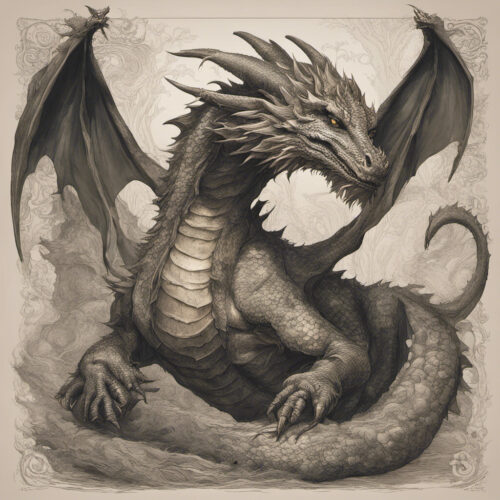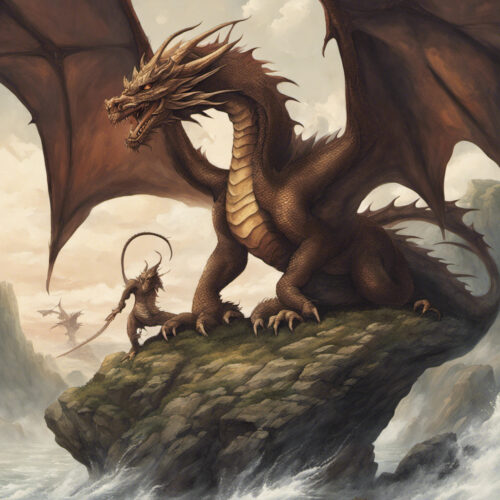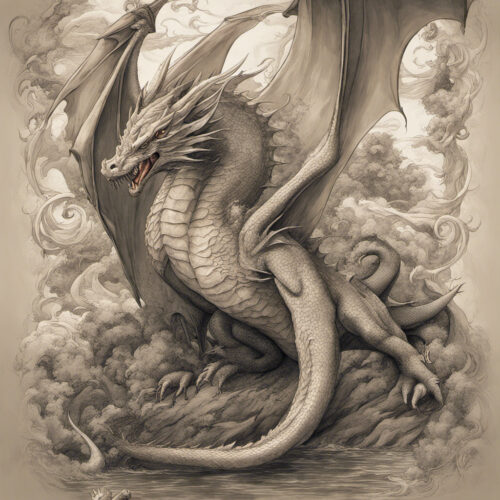Dragons, magnificent mythical creatures that have captured our imagination for centuries, have played a significant
role in shaping the course of classic literature. From ancient legends to modern fantasy novels, dragons have
stirred emotions, evoked awe, and ignited our sense of adventure. In this article, we will explore the profound
impact these legendary beasts have had on the literary world.
The Ancient Origins
The history of dragons in literature can be traced back to ancient civilizations such as Mesopotamia and Ancient
Greece. In these early tales, dragons were often portrayed as fierce monsters guarding treasures or terrorizing
the land. The myth of the hero slaying the dragon, like the famous story of Saint George, became a recurring theme
in medieval literature.
As classic literature evolved, dragons took on multiple roles in various cultural contexts. In Norse mythology,
dragons represented chaos and destruction, while in Chinese folklore, they symbolized wisdom and good fortune.
These diverse interpretations ensured dragons remained a rich source of inspiration for authors throughout history.
Dragons in Classic Novels
Dragons found their way into classic novels, enchanting readers with their captivating presence. One notable example
is J.R.R. Tolkien’s masterpiece, “The Hobbit.” The fearsome dragon Smaug, guarding a treasure hoard beneath the
Lonely Mountain, serves as the primary antagonist in this beloved tale. Tolkien’s vivid descriptions of Smaug’s
fiery breath and impenetrable scales brought the dragon to life in readers’ imaginations.
Another classic novel that prominently features dragons is Ursula K. Le Guin’s “A Wizard of Earthsea.” The book
introduces readers to the ancient and terrifying dragon, Orm Embar. Through its interactions with the main
character, Ged, the dragon represents power, wisdom, and the balance of the world. Le Guin’s masterful
storytelling makes Orm Embar a memorable addition to the dragon lore within classic literature.
The Influence on Modern Fantasy
Dragons have had an immense influence on modern fantasy literature. One of the most beloved fantasy series,
George R.R. Martin’s “A Song of Ice and Fire” (adapted into the hit TV series “Game of Thrones“), prominently
features dragons. Daenerys Targaryen’s connection with her dragons symbolizes her growing strength, transformation,
and the reemergence of magic in the world of Westeros.
Dragons’ ability to captivate readers’ imaginations and transport them to fantastical worlds has made them a staple
in modern fantasy literature. Authors like J.K. Rowling, Christopher Paolini, and Robin Hobb have all incorporated
dragons into their bestselling series, further solidifying their importance in shaping the genre’s evolution.
Exploring the Realm of Dragons
If you’re fascinated by dragons and want to dive deeper into the world of dragon literature, be sure to check out
some of these must-read classics:
- Eragon by
Christopher Paolini – The epic tale of a young dragon rider destined to save his world. - Dragonflight by Anne McCaffrey –
The first book in the renowned Dragonriders of Pern series. - The Dragon Trial by
Lucinda Hare – An enthralling adventure filled with magical dragons and ancient prophecies.
The Magic Lives On
Dragons have undoubtedly played a pivotal role in shaping the course of classic literature and continue to inspire
authors and readers alike. Their fierce yet awe-inspiring presence lures us into otherworldly realms where magic
and adventure intertwine. As we celebrate the enduring fascination with these mythical creatures, let our
imaginations take flight and explore the vast realms where dragons rule.



